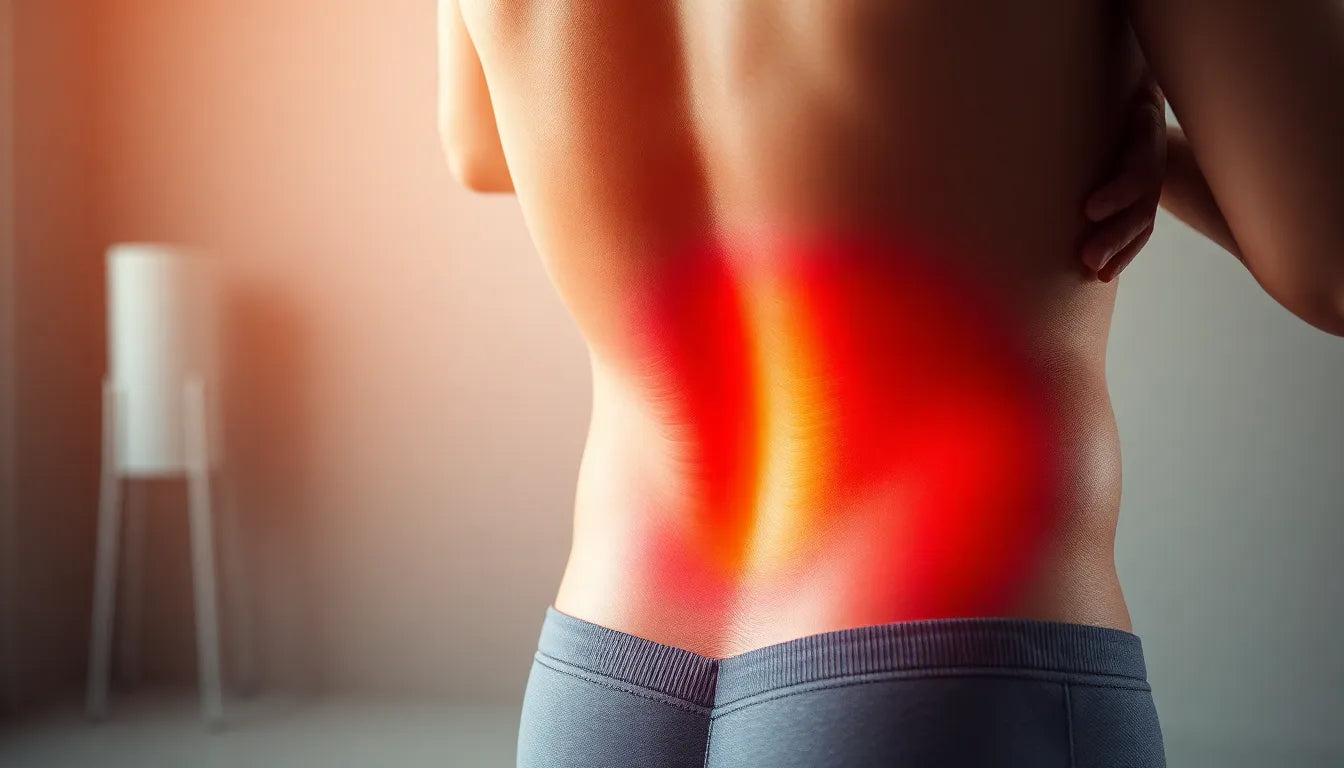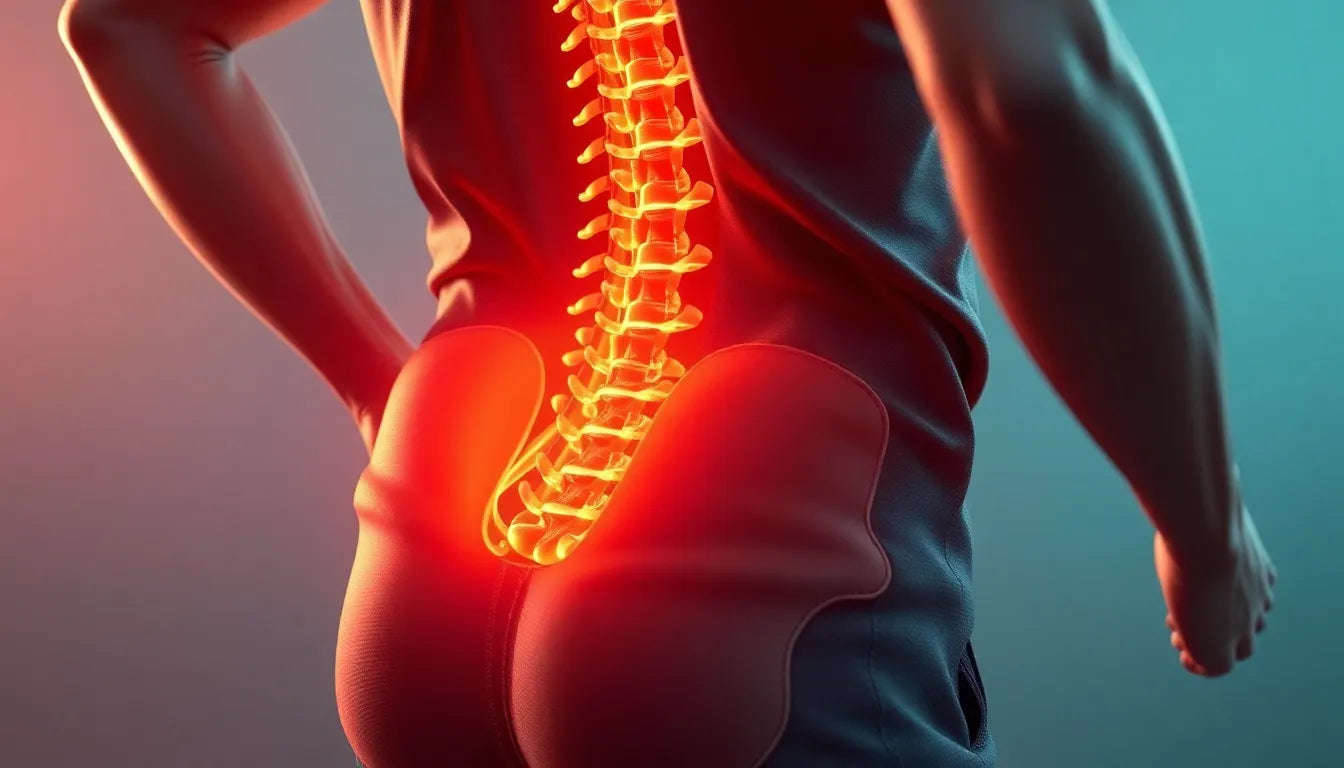Understanding herniated discs is crucial for anyone experiencing persistent back pain or discomfort. A herniated disc, also known as a slipped or ruptured disc, occurs when the soft, jelly-like center of a spinal disc pushes through a tear in its tougher outer layer. This condition can lead to pain, numbness, or weakness, particularly if the herniated material compresses nearby nerves. Most commonly affecting adults between the ages of 30 and 50, herniated discs are a prevalent issue that can significantly impact quality of life if not addressed promptly.
Recognizing the importance of early detection
Early detection of a herniated disc is vital for effective management and to prevent further complications. Misinterpreting the symptoms as general back pain is a common concern, leading many to delay seeking appropriate treatment. Additionally, there is often an unfounded fear that diagnosing a herniated disc will require invasive procedures. However, understanding the signs and knowing when to consult a healthcare professional can make a significant difference in treatment outcomes.
Common concerns and misunderstandings
One of the main challenges in identifying a herniated disc is distinguishing its symptoms from those of other types of back pain. Many individuals might dismiss their discomfort as a minor issue, only to find that it worsens over time. Furthermore, the fear of invasive diagnostic methods can deter people from seeking medical advice. However, modern diagnostic techniques are often non-invasive and straightforward, making it easier than ever to confirm a diagnosis and begin appropriate treatment.
The purpose of this guide
This guide aims to provide a comprehensive overview of how to identify and confirm a herniated disc, whether through self-assessment at home or with the help of professional diagnostics. By understanding the symptoms and the available diagnostic methods, individuals can take proactive steps toward managing their condition effectively. This resource will explore both at-home checks and professional evaluations, offering a balanced approach to understanding this common spinal issue.
Recognizing symptoms at home
Identifying a herniated disc at home begins with recognizing key symptoms that differentiate it from general back pain. One of the most telling signs is numbness or tingling that radiates to the limbs, often indicating nerve involvement. This can manifest as a sharp, burning pain in specific areas such as the back, buttocks, leg, or arm, depending on the location of the herniation. Muscle weakness in the affected region is another red flag, particularly if it impairs daily activities.
Activities like coughing, sneezing, or prolonged sitting can exacerbate the pain, making it crucial to monitor how these actions affect your discomfort. One practical home test, the Straight Leg Raise Test, can help suggest nerve involvement. To perform this, lie flat on your back and slowly raise one leg while keeping it straight. If this movement triggers pain, it may indicate a herniated disc.
Professional diagnostic methods
When home assessments suggest a herniated disc, professional diagnostics can provide confirmation. The initial medical evaluation typically includes a thorough physical exam to assess reflexes, strength, sensation, and movement. A detailed medical history discussion will also help pinpoint symptoms and lifestyle factors contributing to the condition.
Imaging techniques are pivotal in diagnosing a herniated disc. An MRI is the gold standard, offering a clear view of soft tissue changes and any nerve compression. In cases where an MRI is unavailable, a CT scan can provide detailed bone imaging. Advanced testing, such as Electromyography (EMG) and Nerve Conduction Studies, measures electrical activity in nerves and muscles, confirming nerve compression or damage. X-rays and myelograms, while not primary tools for diagnosing herniated discs, can rule out other causes or provide detailed spinal imaging.
Patient experience during tests
Understanding what to expect during diagnostic tests can alleviate anxiety and prepare patients for the process. An MRI, though non-invasive, involves lying still inside a tube-like machine, which some may find claustrophobic. It’s important to remain calm and communicate with the technician if discomfort arises.
For an EMG, small needles are inserted into the muscles, which might cause slight discomfort. This test is crucial for assessing the electrical activity in muscles and nerves, providing valuable insights into the extent of nerve involvement.
Overall, these diagnostic methods, though varied in approach, collectively offer a comprehensive assessment of a suspected herniated disc, guiding effective treatment strategies.
When to seek urgent medical attention
While many cases of herniated discs can be managed with conservative treatments, certain symptoms require immediate medical attention. Red flags include sudden loss of bowel or bladder control, which may indicate a serious condition called cauda equina syndrome. Severe leg or arm weakness, or numbness in the rectal or genital area, are also signs that necessitate urgent evaluation by a healthcare professional. These symptoms suggest significant nerve compression, which, if left untreated, can lead to permanent damage.
Preventive and management tips
Preventing a herniated disc involves maintaining a healthy lifestyle and being mindful of spinal health. Ergonomic advice is essential for those who spend long hours sitting or performing repetitive tasks. Ensuring proper posture, using ergonomic chairs, and taking regular breaks to stretch can significantly reduce the risk of disc herniation. Additionally, engaging in regular exercise, particularly activities that strengthen the core muscles, can provide better support for the spine and help prevent injuries.
For those already experiencing symptoms, management strategies may include physical therapy, which focuses on exercises that improve flexibility and strengthen the back muscles. Over-the-counter pain medications or prescribed anti-inflammatory drugs can alleviate discomfort, while hot or cold compresses might offer temporary relief from pain and swelling. In some cases, corticosteroid injections may be recommended to reduce inflammation around the affected nerves.
Frequently asked questions
What are the first signs of a herniated disc?
Initial symptoms often include localized pain, numbness, or tingling in the back or limbs. These sensations can radiate to the arms or legs, depending on the location of the herniated disc.
Can a herniated disc heal on its own?
Yes, in some cases, a herniated disc can heal over time. Symptoms may improve with rest, physical therapy, and conservative management. However, if symptoms persist or worsen, medical intervention may be necessary.
How long does it take to recover from a herniated disc?
Recovery time varies among individuals. Some people may experience relief within a few weeks, while others might take several months. Factors such as the severity of the herniation and adherence to treatment plans can influence recovery duration.
Is surgery always necessary for a herniated disc?
Surgery is typically considered only after other treatments, such as physical therapy and medication, have failed to alleviate symptoms. It is reserved for severe cases where there is significant nerve compression or when conservative methods do not provide relief.
How can I prevent a herniated disc?
Prevention strategies include maintaining a healthy weight, exercising regularly, and using ergonomic furniture to support proper posture. Strengthening core muscles through exercises can also help stabilize the spine and reduce the risk of disc issues.
Sources
- NYU Langone Health. "Herniated Disc in Adults: Diagnosis."
- Mayo Clinic. "Herniated Disk: Diagnosis & Treatment."
- Cleveland Clinic. "Herniated Disc: Symptoms & Healing Process."
- Penn Medicine. "Herniated Disc: Symptoms, Causes, Diagnostic Tools."
- Barrow Neurological Institute. "Herniated Disc: Diagnosis, Physical Testing, Imaging."
- WebMD. "Herniated Disc Symptoms and When to Seek Help."
- Weill Cornell Medicine. "Herniated Disc: Diagnostic Imaging and Tests."


















